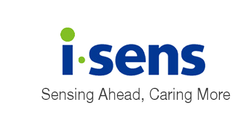
What Is a Hyperglycemic Crisis?
Hyperglycemic crisis is an acute metabolic complication that can be precipitated when hyperglycemia is left untreated.1,2 There are two types of hyperglycemic crisis: diabetic ketoacidosis (ie, diabetic coma) or hyperosmolar hyperglycemic state (ie, severe hyperglycemia without ketoacidosis).3,4 They are life-threatening and require immediate medical attention.
Diabetic ketoacidosis (DKA) occurs when the body lacks to utilize glucose as fuel and begins breaking down fat reserves for energy, a process called ketosis. Ketones are produced as a byproduct of this process, and they build up in the blood, causing ketoacidosis. Ketoacidosis causes acidemia (ie, acidic blood) and can lead to serious consequences such as cerebral edema, coma, and even death.5 While the pathogenesis of hyperosmolar hyperglycemic state (HHS) is not as well understood as that of DKA, the underlying mechanisms are similar.4 In HHS, there may be enough insulin to prevent ketosis but not to control hyperglycemia, leading to decreased glucose excretion, severe dehydration, and impaired renal function.
What Are the Symptoms?
Individuals should watch out for the following symptoms:3,6
- Nausea and vomiting
- Fruity-smelling breath
- Shortness of breath
- Very dry mouth
- Abdominal pain
- Altered mental status
Individuals presenting with DKA or HHS should be immediately and aggressively treated with saline rehydration, intravenous insulin, and electrolyte replacement in a hospital setting.7
How Can It Be Prevented?
Regularly monitoring blood glucose levels and adhering to medication plans are important in preventing a hyperglycemic crisis.8,9 Watching out for conditions that cause intravenous volume depletion (e.g., diarrhea, vomiting, intense exercise) as well as other precipitating factors (e.g., alcohol, reduced oral intake, surgery, infection, certain glucose-lowering medications) can be key to prevention.9 Especially during times of illnesses, monitor blood glucose levels more frequently and check urine ketone levels every four to six hours if glucose levels measure >240 mg/dL.10 A blood ketone meter can allow earlier detection of DKA.8 Individuals who use insulin pumps are also advised to have a prescription for basal insulin in the case of pump failure.
|
References: |
(Disclaimer)
The content of this article is intended to provide a general information and knowledge on the subject matter. The views expressed in newsletters, articles, and blogs in the i-SENS USA website are not necessarily those of i-SENS Incorporated, i-SENS USA Incorporated or our publishers. Medical or nutritional information on i-SENS USA website is not intended to replace professional medical advice – you should always consult a specialist with any questions about your specific circumstances.





Add a comment